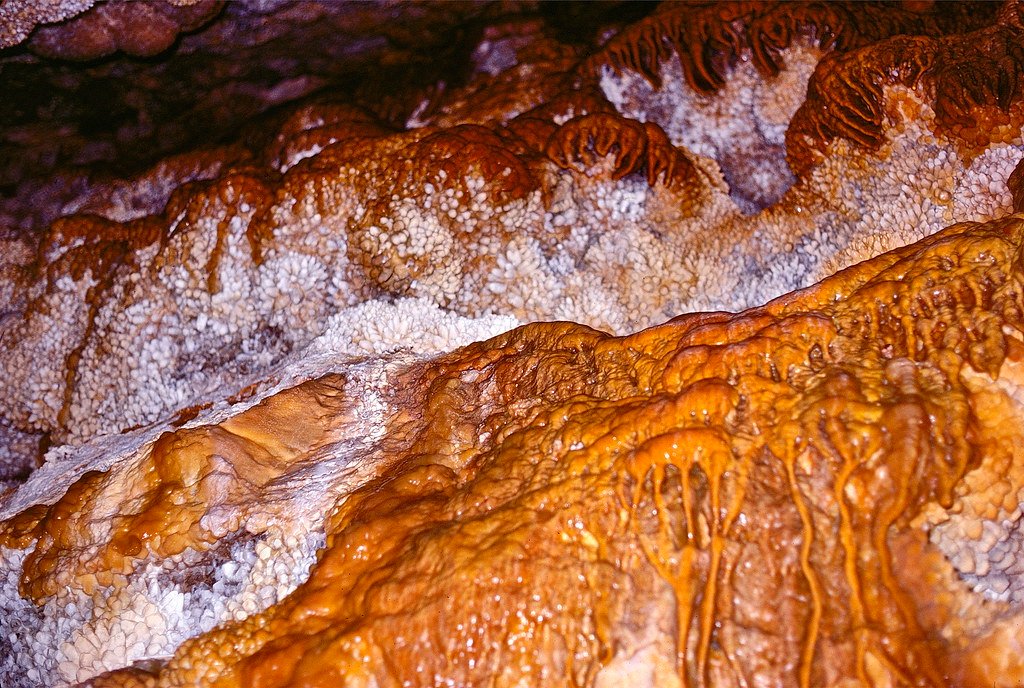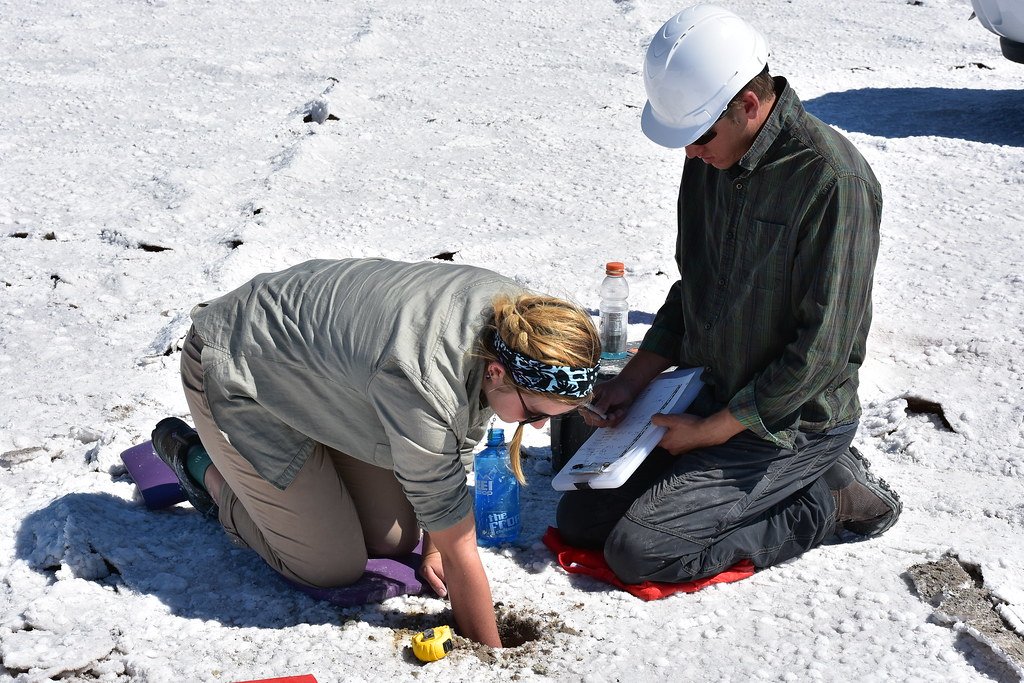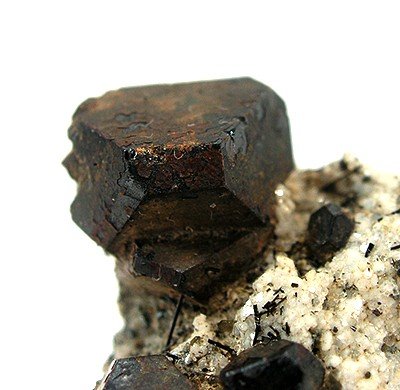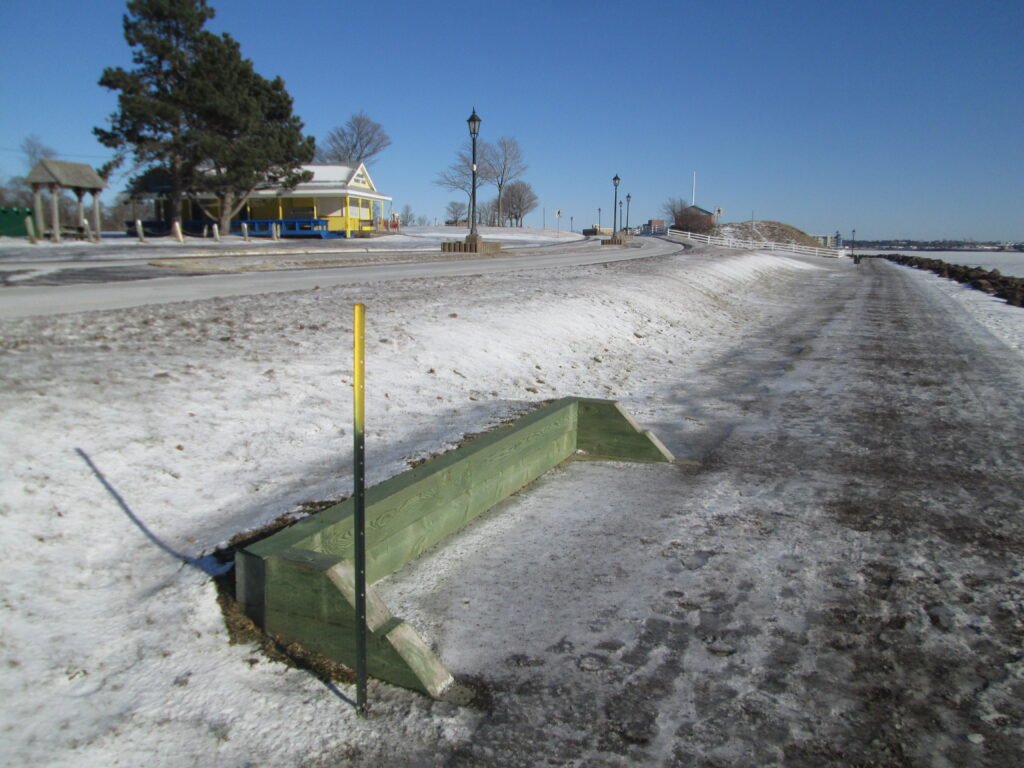High above the treeline, where oxygen runs thin and temperatures plummet below freezing, something extraordinary is happening in the Rocky Mountains. Hidden from view in the seemingly barren soils and rock faces, an ancient army of microscopic warriors is quietly transforming one of Earth’s most extreme environments. These aren’t your garden-variety bacteria – they’re specialized extremophiles, tiny life forms that don’t just survive in conditions that would kill most living things, but actually flourish in them.
What makes these alpine microbes so remarkable isn’t just their ability to endure brutal cold, crushing winds, and intense UV radiation. It’s how they’ve become master chemists, literally eating rocks and breathing life into sterile mineral landscapes. They’re the unsung heroes of mountain ecology, creating the very foundation that allows higher life forms to eventually take root in these harsh alpine environments.
The Frozen Frontier: Where Life Shouldn’t Exist but Does

Picture the Rocky Mountain peaks in winter, blanketed in snow with temperatures dropping to minus 40 degrees Fahrenheit. Approximately 80% of our planet’s biosphere is permanently cold, including montane regions like the Alps, Himalayas and Rocky Mountains, where temperatures remain below 5°C for most of the year. In these seemingly lifeless landscapes, a hidden microbial universe thrives against all odds.
As glaciers increasingly retreat with climate change, barren bedrock is exposed and colonized by pioneer microorganisms, giving rise to soil formation in a successional manner with an increase in organic matter and fine soil fractions. These microscopic colonizers aren’t just surviving – they’re actively engineering their environment, creating the conditions necessary for future plant and animal life.
The extreme conditions these microbes face would quickly kill most life forms. These challenges include reduced enzyme activity, decreased membrane fluidity, altered transport of nutrients and waste products, decreased rates of transcription, translation and cell division, protein cold-denaturation, inappropriate protein folding, and intracellular ice formation. Yet through millions of years of evolution, these remarkable organisms have developed sophisticated strategies to not just survive, but thrive in these conditions.
Psychrophiles sensu stricto grow optimally at less than 15°C with an upper limit of 20°C, while cold-adapted microorganisms isolated from terrestrial environments like mountains are mostly considered psychrotolerant, able to survive extreme temperature fluctuations. What’s fascinating is how these tiny organisms have essentially become biological antifreeze factories, producing specialized proteins and altering their cellular chemistry to function when water should be solid ice.
Rock Eaters: The Mineral-Munching Microbes

Microbial communities are the first colonizers in high mountain environments, acting as keystone players in elemental transformation, carbon and nitrogen fixation, and promoting mineral soil fertility and pioneer plant growth. But how exactly do these microscopic organisms manage to extract nutrients from solid rock?
The answer lies in their incredible chemical arsenal. By secreting organic acids and siderophores, microbes dissolve primary minerals, releasing essential nutrients and initiating early pedogenesis. Think of them as microscopic miners, using powerful acids to break down granite, limestone, and other rocky substrates to access the iron, phosphorus, and other essential elements locked within.
Microbes promote rock weathering with three mechanisms: mechanical damage, water retention, and acidification by microbial metabolites. They literally drill into rock surfaces, creating tiny fractures that expand when water freezes, while simultaneously bathing the mineral surfaces in corrosive organic compounds. It’s like having millions of tiny construction crews working around the clock to demolish mountains, one mineral grain at a time.
The interaction between minerals, plants, and bacteria results in the release of macro- and micronutrients into the soil solution, with root microorganisms promoting mineral dissolution by producing complexing ligands, affecting pH, or performing redox reactions. This creates a positive feedback loop where the weathered minerals provide nutrients that support even more microbial activity.
Studies show that certain bacterial strains like Bacillus megatherium can promote rock weathering and increase nutrient elements in the environment, thereby improving soil formation and plant growth. These findings suggest that specific microbes could be nature’s original environmental engineers, deliberately modifying their surroundings to create more hospitable conditions.
The Coldest Chemistry Lab on Earth

The biochemistry happening inside these alpine microbes defies everything we thought we knew about life’s temperature limits. Psychrophiles have successfully overcome challenges where any decrease in temperature exponentially affects biochemical reaction rates, with remarkable organisms like Moritella profunda showing maximal growth rates at 2°C and maximum growth temperature of only 12°C. Imagine having a metabolism that actually works better when it’s colder outside than your refrigerator!
To accomplish this biological impossibility, these microbes have revolutionized their cellular machinery from the ground up. They must overcome the stiffening of their lipid cell membrane by adapting membrane structures with high content of short, unsaturated fatty acids, which allows for lower melting points and increased membrane fluidity. It’s like switching from thick honey to water when the temperature drops, keeping their cellular transport systems flowing even in sub-zero conditions.
Antifreeze proteins are synthesized to keep psychrophiles’ internal space liquid and protect their DNA when temperatures drop below water’s freezing point, while their enzymes engage in an activity-stability-flexibility relationship to compensate for the freezing effect of their environment. These biological antifreeze compounds are so effective that some bacteria can remain metabolically active at temperatures as low as -20°C.
At low temperatures, the solubility of gases and production of toxic reactive oxygen species increase significantly, so cold-adapted bacteria have evolved enhanced antioxidant capacity or suppressed activities that give rise to harmful compounds. They’ve essentially become living laboratories for studying how life can adapt to conditions that seem utterly hostile to biological processes.
Underground Networks: The Hidden Internet of the Mountains

Endolithic organisms live within rocks, minerals, coral, animal shells, or in pores between mineral grains, with many being extremophiles living in places long considered inhospitable to life. But these aren’t isolated hermits – they’re part of an intricate underground communication network that spans entire mountain ranges.
Most endoliths are autotrophs that generate organic compounds from inorganic matter, while some have specialized in feeding on their autotroph relatives, creating subsurface lithoautotrophic microbial ecosystems (SLiME) or endolithic systems within the subterranean lithic biome. Imagine an entire ecosystem living inside solid rock, complete with producers, consumers, and recyclers, all operating in spaces smaller than the width of a human hair.
Endolithic organisms have been found in surface rocks in regions of low humidity and low temperature, including the Dry Valleys and permafrost of Antarctica, the Alps, and the Rocky Mountains. These communities create their own microenvironments within the rock matrix, where temperature and humidity remain more stable than the harsh external conditions.
The metabolism of endolithic microorganisms is versatile, with genes involved in sulfur metabolism, iron metabolism and carbon fixation found in many endolithic communities, though whether they metabolize directly from surrounding rock or excrete acid to dissolve it first remains undetermined. They’re essentially running parallel metabolisms – some directly consuming rock minerals while others process the dissolved nutrients that result from this geological digestion.
Nitrogen Factories in the Sky

One of the most remarkable abilities of alpine microbes is their capacity to literally pull nitrogen out of thin air. In alpine oligotrophic environments, bacteria drive symbiotic or non-symbiotic nitrogen fixation due to the nitrogenase enzyme able to reduce atmospheric nitrogen into soluble ammonium, with the most studied microorganisms being rhizobia and other symbiotic nitrogen-fixing bacteria. This is equivalent to having microscopic fertilizer factories scattered throughout the mountains, constantly converting atmospheric nitrogen into forms that plants can actually use.
Asymbiotic nitrogen-fixers are considered potential key players in nitrogen accumulation after glacier retreat, when mineral soil without pioneer plants needs to be enriched with nutrients, with cyanobacteria being among the most important bacterial taxa in deglaciated oligotrophic environments. These bacterial pioneers arrive first at newly exposed glacial terrain, immediately beginning the process of atmospheric nitrogen capture that will eventually support entire plant communities.
The foreland of a retreated glacier represents a unique habitat to study asymbiotic nitrogen fixation, with the first investigation of asymbiotic diazotrophic diversity in high altitude alpine soil revealing important nitrogen-cycling processes. The research shows that different microbial communities dominate nitrogen fixation at different stages of soil development, creating a succession of specialized nitrogen-fixing teams.
Under different climate conditions, moss-cyanobacteria associations show varying N-fixation rates, with plants on young soils being strongly dependent on asymbiotic nitrogen fixation for their ability to accumulate large amounts of nitrogen. This creates a fascinating partnership where early plant colonizers depend entirely on these microscopic nitrogen factories for their survival in nutrient-poor alpine soils.
Iron Warriors: Masters of Metal Metabolism

Iron is an essential micro-element for life, present in the environment with two oxidation states – trivalent (ferric) and divalent (ferrous) – with bacterially mediated oxidation of ferrous iron prevailing over molecular oxidation in acidic environments. In the Rocky Mountains, specialized iron-oxidizing bacteria have turned metal metabolism into an art form, extracting energy from chemical reactions that would poison most life forms.
Recent findings have revealed that iron metabolism is regulated by manganese concentration, highlighting the interconnection among the cycles of different elements in microbial systems. These microbes have essentially become living geochemical laboratories, processing multiple metals simultaneously and creating complex mineral transformations that affect entire watersheds.
Some locations have relatively high abundance of Zetaproteobacteria, a class of iron-oxidizing bacteria that forms dense mat structures made from iron oxides and polysaccharides which are used as colonizing surfaces for other microbial taxa. Think of these bacteria as constructing microscopic apartment buildings out of rust, creating three-dimensional habitats that other microorganisms can move into and colonize.
The weathering activity of fungi associated with bacteria can occur through oxidative or reductive attack of reactive mineral constituents like manganese and iron, with significant correlations found between fungal communities and iron concentrations. This creates complex partnerships where different microorganisms specialize in processing different metals, working together like a microscopic assembly line to break down complex mineral deposits.
The Sulfur Cycle Specialists

Sulfur cycling genes like dissimilatory sulfite reductase and thiosulfotransferase are found across multiple bacterial groups including Alphaproteobacteria, Deltaproteobacteria, and Gammaproteobacteria in alpine environments. These specialized microbes have mastered one of chemistry’s most challenging elements, turning sulfur compounds into both energy sources and building materials for life.
In spots where abundant sulfur rocks are present, microbial sulfur processing could lead to exceptional primary production. This means that areas rich in sulfur-containing minerals can support surprisingly lush microbial communities, creating biological hotspots in otherwise nutrient-poor alpine environments.
Sulfate reduction by certain bacteria dominates in some environments and can change mineral composition through pyrite production, while some bacterial clades can store sulfur to metabolize when it’s not available from external sources. These bacteria are essentially stockpiling sulfur compounds during times of abundance, then slowly consuming their reserves during periods of scarcity – a biological equivalent of saving money for hard times.
The co-occurrence of different sulfur-processing genes in certain bacterial taxa indicates functional redundancy that has been shown to increase ecological stability and resilience to disturbance. This means that these microbial communities have built-in backup systems, ensuring that critical sulfur cycling continues even when environmental conditions change dramatically.
Temperature Tricksters: Living Anti-Freeze Systems

Psychrophiles are protected from freezing and ice expansion through ice-induced desiccation and vitrification, with free-living cells able to desiccate and vitrify between -10°C and -26°C, while cells may continue metabolic activity in extracellular fluid down to these temperatures. These organisms have essentially learned to become living glass, entering a state where their cellular contents become solid but remain undamaged by ice crystal formation.
Certain cold-adapted bacteria can transition into a viable but nonculturable (VBNC) state where they can respire and use substrates for metabolism but cannot replicate, with this highly reversible state being debated as either an active survival strategy or eventual cellular decline. It’s like biological hibernation taken to an extreme – these bacteria can essentially pause their lives for months or years, then wake up when conditions improve.
Metabolically active bacteria have been found in permafrost samples from Antarctica, Canada and Siberia with an estimated age of 500,000 years, suggesting that dormant cells retain effective DNA repair mechanisms over incredible timescales. This raises mind-boggling questions about the true limits of life’s persistence – some of these bacteria were alive when our human ancestors were just beginning to evolve!
Huge excess concentrations of CO2 and CH4 in deep Greenland glacier ice have been related to ongoing in situ production by microorganisms trapped in ice 400,000 years ago, though exponential growth recorded in laboratory conditions is unlikely to occur under natural environmental conditions. These ancient microbes continue producing gases even while trapped in ice older than human civilization, demonstrating the incredible persistence of microbial life in extreme conditions.
Chemical Weathering Weapons

Microbial weathering of minerals and rocks is a key process that underpins soil formation and global biogeochemical cycles, with microbes facilitating mineral dissolution and rock degradation to enhance the release of elements from geological reservoirs. These microscopic organisms wield an impressive arsenal of chemical weapons specifically designed to break down the toughest materials on Earth.
Certain bacteria can cause mineral weathering by interacting with various minerals, with these microorganisms providing various nutrient elements for life in lithic environments. They’re essentially performing geological alchemy, transforming inorganic rock into the organic compounds necessary for life.
Rock-inhabiting fungi are associated with weathering of rocks by enhancing mineral dissolution and diagenesis, with mineral-weathering ability appearing in combination with bacteria such as in lichen partnerships. These fungal-bacterial partnerships create some of nature’s most effective rock-dissolving teams, combining different chemical strategies to maximize their geological impact.
Rock weathering in early stages of soil development in polar regions can promote certain microbial communities in surrounding soil by leaching of rock minerals. This creates expanding zones of biological activity radiating outward from initial colonization sites, like biological ripples spreading across the landscape as more minerals become available to support life.
Arsenic Alchemists and Toxic Metal Specialists

Arsenic is inferred to be present at many alpine sites based on the ubiquity of arsenic reductase genes, with diverse microorganisms able to metabolize arsenic, and nine different classes showing arsenic resistance capabilities indicating detoxification is necessary for survival. In environments where toxic metals would kill most life forms, these specialized bacteria have evolved to actually use poisons as food sources. Some bacteria have been discovered living 7,900 feet below the surface, breathing sulfur to survive and eating rocks such as pyrite as their regular food source—demonstrating a remarkable biochemical adaptability that allows life to thrive in what were once thought to be uninhabitable conditions. These extremophiles not only challenge our understanding of life’s limits but also offer insights into the kinds of organisms that might exist on other planets or moons, where extreme environments and toxic compounds are the norm rather than the exception.




